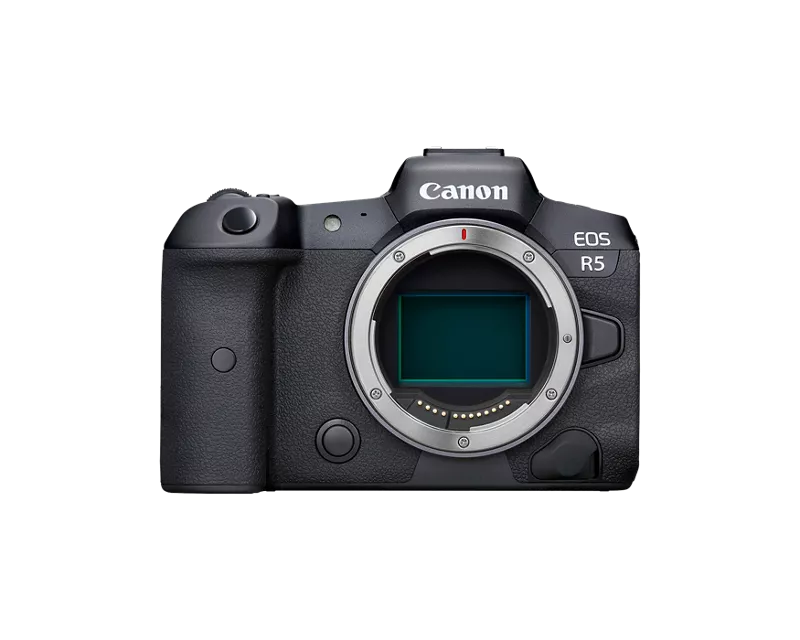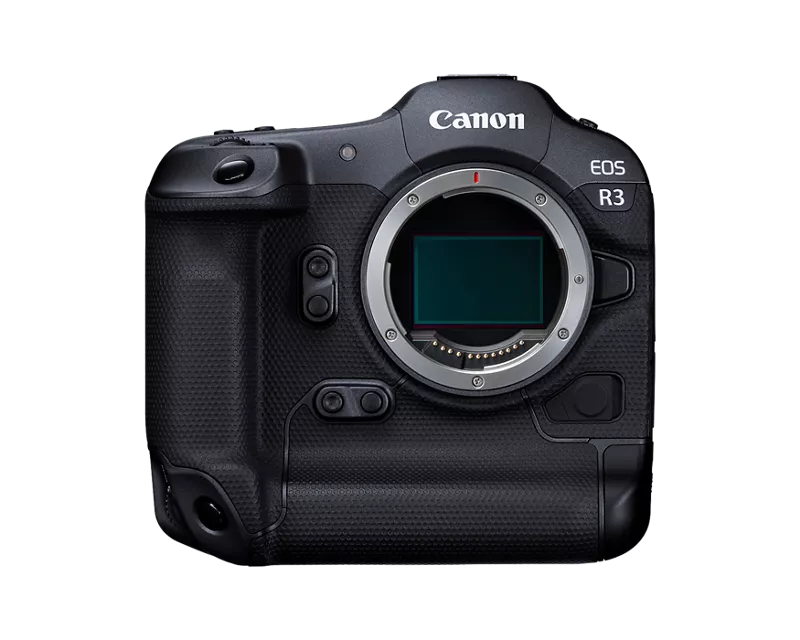- Canon Community
- Discussions & Help
- Camera
- EOS DSLR & Mirrorless Cameras
- EOS R3: Theater Dance Show Images, Weird colors, W...
- Subscribe to RSS Feed
- Mark Topic as New
- Mark Topic as Read
- Float this Topic for Current User
- Bookmark
- Subscribe
- Mute
- Printer Friendly Page
EOS R3: Theater Dance Show Images, Weird colors, White balance Issue
- Mark as New
- Bookmark
- Subscribe
- Mute
- Subscribe to RSS Feed
- Permalink
- Report Inappropriate Content
07-04-2024
07:44 PM
- last edited on
07-04-2024
10:29 PM
by
Tiffany
I shot a dance show in a theatre that was using a projection on a white screen behind the stage. I was using my EOS R3 and the RF 70-200 mm f/2.8 lens. I had anti-flicker enabled and was using the mechanical shutter. Settings were: ISO 8000, f/5 at 1/500 sec. W/B at 3500. Some of the images had very weird and wild colors. Photo A and B were consecutive shots taken a fraction of a second apart. This was happening throughout the show. Many of my images were ruined. I have shot in this theatre previously with projections on the screen with no problem. Now they have a new projector. 60 HZ
Do you have any idea what was causing this issue or how I can deal with it? Thank you.
- Mark as New
- Bookmark
- Subscribe
- Mute
- Subscribe to RSS Feed
- Permalink
- Report Inappropriate Content
07-04-2024 08:13 PM - edited 07-04-2024 08:30 PM
Hi and welcome to the forum:
Looking at your two examples, the lighting and colour of the dancers appears to be consistent - especially given you had a set white balance. Given the image behind is a projection which is itself subject to colour bias as the colour spectrum is generated in different colour frequencies at high speed, I would suspect that the differences in colour are shifts from that source, as our eyes see colour very differently from a camera, and compensate (there is a lot of brain compensation there), whereas the camera (because of its fixed colour temp setting), did and especially with a high enough shutter speed to isolate those different colour elements cycling. If you had the white balance on, say, auto, and a much slower shutter speed, the effect might have been different - but then you might not have frozen the dancers.
Can you replicate the issue when away from this location or is the white balance ok again?
cheers, TREVOR
"The Amount of Misery expands to fill the space available"
"All the variety, all the charm, all the beauty of life is made up of light and shadow", Leo Tolstoy;
"Skill in photography is acquired by practice and not by purchase" Percy W. Harris
- Mark as New
- Bookmark
- Subscribe
- Mute
- Subscribe to RSS Feed
- Permalink
- Report Inappropriate Content
07-04-2024 08:26 PM
Thank you for the prompt reply Trevor. I know the lighting technician at the theatre and may be able to run a test with the W/B set to auto. Good suggestion. I had previously shot some images with the electronic shutter and the results were much worse with terrible banding of heavily saturated reds and yellows. Dave..
- Mark as New
- Bookmark
- Subscribe
- Mute
- Subscribe to RSS Feed
- Permalink
- Report Inappropriate Content
07-04-2024 08:33 PM
That is consistent for me then. Definitely worth trying out the experiment.
cheers, TREVOR
"The Amount of Misery expands to fill the space available"
"All the variety, all the charm, all the beauty of life is made up of light and shadow", Leo Tolstoy;
"Skill in photography is acquired by practice and not by purchase" Percy W. Harris
- Mark as New
- Bookmark
- Subscribe
- Mute
- Subscribe to RSS Feed
- Permalink
- Report Inappropriate Content
07-05-2024 09:12 AM
You are dealing with a frame and refresh rate issue with the projector and it likely will NOT be synchronized to the frequency of the AC line (which is what the stage lighting and your camera flicker detect are using).
Because you know the lighting technician, try a simple experiment and have him/her set the frame AND refresh rate of the projector to 60 hz if possible. Then if you are fortunate, the projector is synced to the 60 hz line frequency along with the lights and your anti-flicker camera detect may work.
I have run into a similar issue in a sports venue with new LED lighting where the light arrays all have their own PWM controller and flicker at individual and varying rate which is one of the reasons I don't use anti-flicker detect for sports shooting. These type of high efficiency controllers are probably the future of high output LED lighting so anti-flicker detect will become useless in the future.
Rodger
- Mark as New
- Bookmark
- Subscribe
- Mute
- Subscribe to RSS Feed
- Permalink
- Report Inappropriate Content
07-05-2024 09:48 AM
Thank you for your excellent response. While I was there the lighting technician did show me that the projector was set to 60 HZ. My R3 has a high frequency anti flicker setting which adjusts the shutter speed to the lighting, such as 1/500.2 sec. However, I can't set the high frequency anti flicker setting if there is movement in the scene. I just had the camera set to the regular anti flicker setting, which I don't believe adjusts the shutter speed to the lighting. Do you know if there is a specific shutter speed I can use that would sync with a projector that is set to 60 HZ? Thank you. Dave..
- Mark as New
- Bookmark
- Subscribe
- Mute
- Subscribe to RSS Feed
- Permalink
- Report Inappropriate Content
07-05-2024 12:04 PM
Greetings Dave,
Rodger, Trevor 😀
Dave,
I don't think there is a standard shutter speed you can specify because the color temperature will vary based on the type of lighting. Even if you nail the projector frequency, ambient conditions will vary as Rodger and Trevor both pointed out. 3k-3.5k should give you approximate "neutral or white" exposure on the stage, but the projector is using a different kelvin standard. A slower shutter can reduce flicker, but as the guys mentioned, you risk motion blur. I would try lowering kelvin to 3k to start and doing the tests discussed. I am not a lighting expert 🙂
~Rick
Bay Area - CA
~R5 C (1.0.7.1) ~RF Trinity, ~RF 100 Macro, ~RF 100~400, ~RF 100~500, +RF 1.4x TC, +Canon Control Ring, BG-R10, 430EX III-RT ~DxO PhotoLab Elite ~DaVinci Resolve ~Windows11 Pro ~ImageClass MF644Cdw/MF656Cdw ~Pixel 8
~CarePaks Are Worth It
- Mark as New
- Bookmark
- Subscribe
- Mute
- Subscribe to RSS Feed
- Permalink
- Report Inappropriate Content
07-05-2024 12:17 PM
Hi Rick,
Thank you for your reply and comments. All are noted and will be included in tests that I will have to do at the theatre.
Dave
Florida.
- Mark as New
- Bookmark
- Subscribe
- Mute
- Subscribe to RSS Feed
- Permalink
- Report Inappropriate Content
07-05-2024 04:43 PM
Using high speed flicker might help.
"The right mouse button is your friend."
- Mark as New
- Bookmark
- Subscribe
- Mute
- Subscribe to RSS Feed
- Permalink
- Report Inappropriate Content
07-06-2024 07:12 PM
Hi Waddizzle,
Agree. The problem with high frequency anti flicker on the R3 is that it has to be set when there is no motion in the scene. I will try to find a spot in the projection where nothing is moving to try setting the high frequency anti flicker.
07/01/2024: New firmware updates are available.
06/06/2024: New firmware updates are available.
EOS R6 Mark II - Version 1.4.0
Speedlite EL-5 - Version 1.1.0
Speedlite Transmitter ST-E10 - Version 1.1.0
05/15/2024: COMING SOON!
The EOS R1
05/01/2024: Service Notice-EOS Webcam Utility Pro for macOS:V2.1.18
04/16/2024: New firmware updates are available.
RF100-300mm F2.8 L IS USM - Version 1.0.6
RF400mm F2.8 L IS USM - Version 1.0.6
RF600mm F4 L IS USM - Version 1.0.6
RF800mm F5.6 L IS USM - Version 1.0.4
RF1200mm F8 L IS USM - Version 1.0.4
03/27/2024: RF LENS WORLD Launched!
03/26/2024: New firmware updates are available.
Canon U.S.A Inc. All Rights Reserved. Reproduction in whole or part without permission is prohibited.






